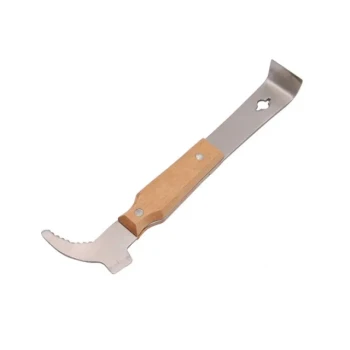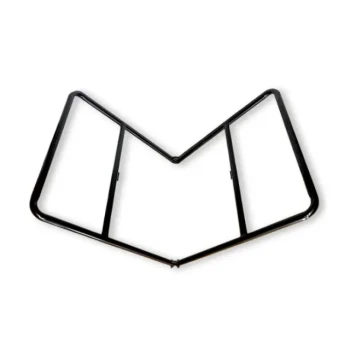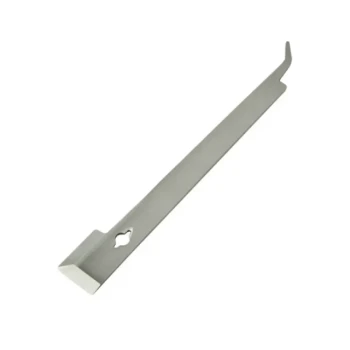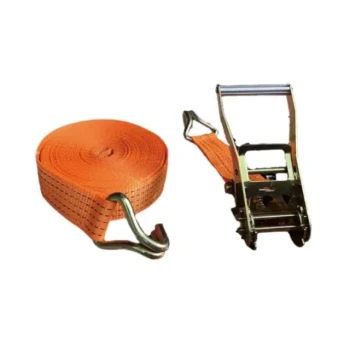While often discussed as separate options, a top bar hive is actually one of the most common types of long hive. The fundamental difference lies not in the horizontal orientation, which they share, but in what the bees build their comb on. A top bar hive uses simple bars for natural, frameless comb, whereas other long hives (like the Long Langstroth) use conventional, four-sided frames.
The core distinction is simple: all top bar hives are long hives, but not all long hives are top bar hives. The defining difference is the internal hardware—simple top bars versus fully enclosed frames—which dictates how you manage the bees and harvest honey.
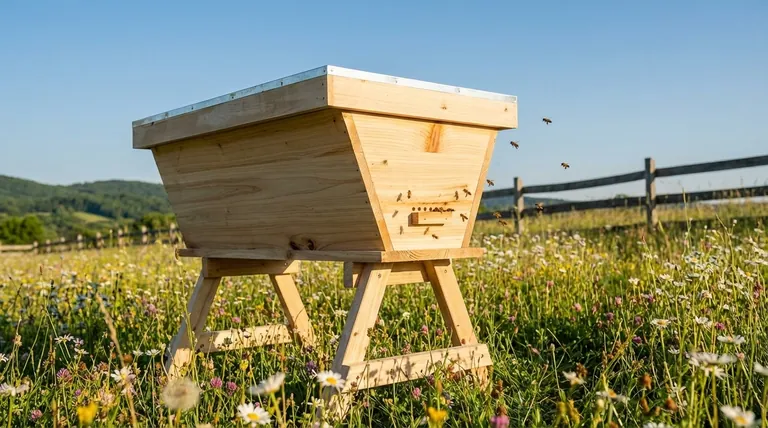
What is a Long Hive? The Horizontal Advantage
The term "long hive" refers to any beehive that is configured horizontally rather than vertically. Instead of stacking boxes to give the colony more space, the hive is contained within a single, elongated box.
A Shared Philosophy: No Heavy Lifting
The primary driver for choosing any long hive is the elimination of heavy lifting. In a standard vertical hive, boxes full of honey can weigh 40-50 lbs or more, and they must be lifted and moved for inspections and harvesting.
Long hives function like a filing cabinet, allowing the beekeeper to inspect one section at a time without disturbing or lifting the entire structure. They are typically set on legs at a comfortable working height.
The Core Concept: Horizontal Expansion
In a long hive, the colony expands sideways. The beekeeper adds empty bars or frames to the end of the box, encouraging the colony to grow horizontally into the new space. This is a stark contrast to vertical hives, where new boxes are added on top of or below the existing brood nest.
The Two Primary Types of Long Hives
The key difference between long hives comes down to what the bees build their comb on. This single design choice has significant implications for beekeeping style and equipment.
The Top Bar Hive (TBH): Natural Comb on Bars
The top bar hive is the most well-known type of long hive. It uses simple wooden bars, often with a beveled edge or a strip of wax, that rest across the top of the hive body.
Bees build their comb downwards from these bars, creating it naturally without a surrounding frame or foundation. This is considered a more naturalistic approach, as bees determine their own cell size and structure.
Because the comb is not supported by a frame, it is more fragile. Inspections are done carefully, one bar at a time, to avoid breaking the delicate comb from its bar.
The Long Langstroth: Conventional Frames in a Horizontal Box
A "Long Langstroth" hive is the other main type of long hive. It is essentially a standard Langstroth hive turned on its side. It uses the exact same full-size frames found in vertical Langstroth hives.
These frames fully enclose the comb on all four sides, making them incredibly durable. They typically use a sheet of beeswax or plastic foundation to guide comb construction.
The use of standard frames means the equipment is interchangeable with vertical Langstroth hives, and the honey-filled frames are sturdy enough to be used in a centrifugal extractor.
Understanding the Trade-offs: Bars vs. Frames
Choosing between a Top Bar Hive and a Long Langstroth comes down to understanding the trade-offs between their core components.
Comb Management and Fragility
The frameless comb in a top bar hive is its defining feature but also its main challenge. It is very delicate and cannot be handled roughly or turned sideways.
The frames in a Long Langstroth are robust. They protect the comb, allowing for more rigorous inspections and easier transportation without fear of breakage.
Honey Extraction Methods
In a top bar hive, honey is harvested by cutting the comb off the bar and crushing it to release the honey, which is then strained. This method, known as crush and strain, destroys the comb.
With a Long Langstroth, the sturdy frames can be placed in a centrifugal extractor. This machine spins the honey out of the cells while preserving the intricate beeswax comb, which can be returned to the bees to refill, saving them immense energy.
Natural Beekeeping vs. Equipment Compatibility
The top bar hive is favored by many "natural" beekeepers because it is foundationless. This allows bees to build their comb and cell sizes according to their own instincts.
The Long Langstroth offers unparalleled equipment compatibility. Because it uses standard frames, you can easily source equipment, move frames between hives (even vertical ones), and buy bees (nucs) that will fit directly into your hive.
Making the Right Choice for Your Goals
Your personal beekeeping philosophy and physical goals should guide your decision. There is no single "best" hive, only the best hive for you.
- If your primary focus is a "natural" approach with minimal equipment: The Top Bar Hive is ideal, as it promotes foundationless comb and a simple management style.
- If your primary focus is maximizing honey harvest and equipment flexibility: The Long Langstroth is superior, as its frames allow for extraction and are compatible with the world's most popular hive system.
- If your primary focus is avoiding heavy lifting above all: Either long hive style fully achieves this goal, so your decision will depend on your preference for comb management and extraction.
Understanding this distinction empowers you to select the hive that best aligns with your beekeeping journey.
Summary Table:
| Feature | Top Bar Hive (TBH) | Long Langstroth Hive |
|---|---|---|
| Comb Support | Simple wooden bars (natural, frameless comb) | Standard, fully enclosed frames |
| Comb Fragility | Delicate, requires careful handling | Robust, protected by frame |
| Honey Extraction | Crush and strain (destroys comb) | Centrifugal extractor (preserves comb) |
| Beekeeping Style | Natural, foundationless approach | Conventional, high equipment compatibility |
| Ideal For | Natural beekeeping, minimal equipment | Maximizing honey harvest, equipment flexibility |
Ready to Equip Your Commercial Apiary or Distribution Business with the Right Hive?
Whether your operation focuses on the natural approach of top bar hives or the high-efficiency of Long Langstroth systems, having reliable, high-quality equipment is fundamental to success.
HONESTBEE supplies beekeeping supplies and equipment to commercial apiaries and beekeeping equipment distributors through wholesale-focused operations. We provide the durable hardware and foundational components you need to build and manage productive horizontal hives.
Let us help you enhance your operation's efficiency and honey yield. Contact our wholesale team today to discuss your specific needs and explore our product catalog.
Visual Guide
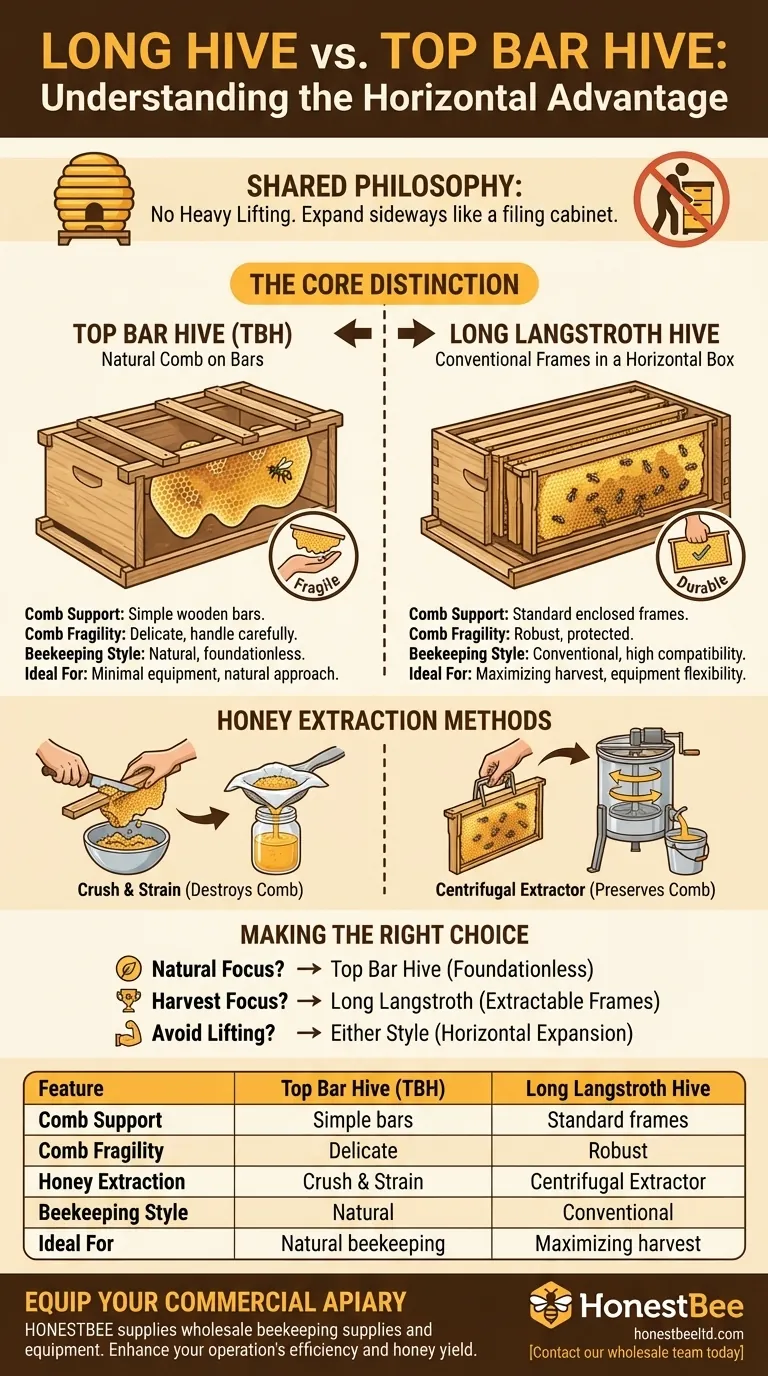
Related Products
- Top Bar Beehive for Beekeeping Wholesales Kenya Top Bar Hive
- Long Langstroth Style Horizontal Top Bar Hive for Wholesale
- HONESTBEE Professional Long Handled Hive Tool with Precision Cutting Blade
- HONESTBEE Advanced Ergonomic Stainless Steel Hive Tool for Beekeeping
- HONESTBEE Professional Multi-Functional Hive Tool with Ergonomic Wood Handle
People Also Ask
- What are the benefits of a top bar hive? A Natural, Low-Impact Approach to Beekeeping
- How should a beekeeper prepare a top-bar hive for overwintering? A Guide to Ensure Colony Survival
- What are the advantages of harvesting honey from a top bar hive? Low-Cost, Simple Harvesting for Beekeepers
- How is honey harvested from a top-bar hive? A Guide to Simple, Low-Equipment Processing
- Which is better Kenya top bar hive or Langstroth? Choose the Right Hive for Your Goals




